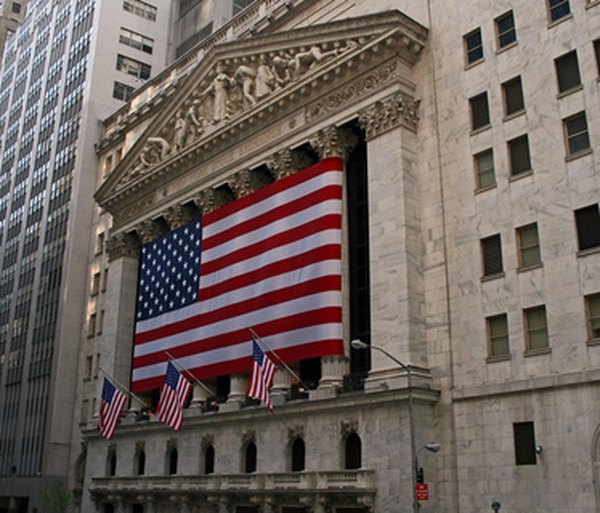The Average Return on the Dow Jones During Its Lifetime
The Dow industrials index reflects market sentiment on U.S. and world markets.
new york stock exchange image by Gary from Fotolia.com
The Dow Jones Industrial Average is a market index of 30 blue-chip U.S. companies covering most sectors of the economy, except transportation and utilities. Since its inception on May 26, 1896, the Dow Jones average rate of return each year has been 5.42 percent, but the market has changed significantly during those 122 years.
Tip
Since 1896, the Dow Jones has increased by more than $25,000, but its annual growth rate is 5.42 percent. Various factors influence the market's growth.
Dow Jones Yearly Returns
Although the Dow does not represent all U.S. companies, it accurately tracks the performance of broader market averages and usually sets the tone for global stock markets.The Dow Jones Industrial Average is a price-weighted index. You add the closing prices of each stock and divide by a divisor, which is adjusted for changes in the index. The base value was 40.94 on May 26, 1896, according to a fact sheet published by S&P Dow Jones Indexes. On May 25, 2018, the Dow closed at 25,516.83, representing a compounded annual growth rate of 5.42 percent over 122 years. You can use that information to get a general idea of the Dow Jones yearly returns.
However, the stocks in the index have changed over the years. In fact, of the 12 initial companies, only General Electric is still a Dow stock. That makes it difficult to compare the Dow Jones today to the Dow Jones that existed in the late 1800s.
The performance data over certain periods are more informative. For example, the historical data suggest that the Dow Jones average rate of return had a compounded annual growth rate of 7.55 percent from a close of 2,002.85 on Jan. 8, 1987 to a closing value of 12,359.92 on Jan. 6, 2012, just 25 years later. The data also suggest that the compounded annual return was about 4.3 percent over the 91 years before 1987.
Significance of the DJIA
The Dow Jones today is a widely followed and reported index because it is a reasonably accurate reflection of overall stock market performance. Although it has only 30 stocks, the index performs similarly to indexes that have hundreds of stocks. These indexes include the Dow Jones U.S. Total Stock Market Index, which covers virtually the entire U.S. stock market, and the S&P 500, which covers 500 of the largest U.S. companies across all economic sectors. Major global indexes, such as the Japanese Nikkei 225 and the German DAX, tend to follow significant up and down price movements in the Dow.
Factors Influencing Returns
Corporate earnings and economic indicators influence Dow Jones yearly returns. Companies make money when interest rates and inflation are low, and when employment and spending levels are high. Conversely, rising interest rates and high unemployment lead to declining profits, which lead to lower stock market returns. Global economic and geopolitical events can also affect the Dow Jones today because of the increasingly global and interconnected nature of businesses and financial markets.
Basics Investing Strategy
Active investing involves picking individual stocks at bargain prices and trying to outperform benchmark indexes, such as the Dow Jones. If you do not have time to research and monitor the Dow Jones average rate of return or individual stocks, you can buy index mutual funds and exchange-traded funds that track various market indexes. These funds do not have high fees and expenses, because the fund managers do not have the same research trading expenses as do the management of actively managed funds. For example, the Dow Jones Industrial Average ETF -- ticker symbol "DIA" on the New York Stock Exchange -- will have virtually the same annual return as the Dow index, and you can trade it just like any other stock.
References
Resources
Writer Bio
Based in Ottawa, Canada, Chirantan Basu has been writing since 1995. His work has appeared in various publications and he has performed financial editing at a Wall Street firm. Basu holds a Bachelor of Engineering from Memorial University of Newfoundland, a Master of Business Administration from the University of Ottawa and holds the Canadian Investment Manager designation from the Canadian Securities Institute.

